Last week, I wrote about Same Place – Different View. One of our students thought it would be neat to see some students’ work using the same theme. Great idea, Sandy! Here it is!
Please note, we have not tampered with the images; they are exactly as given to us in class. Some may not have had a chance to work on their final processing, but it is the approach and vision that counts here, not the finishing touch. Some may wonder why their versions of the scene were not included. We can’t include ones that weren’t submitted for the slide show, and we will not use ones that aren’t labeled with the photographers’ names! After all, we want to give due credit.
In the mountains of western Virginia, one of the places we have gone has a wonderful old snake fence, so popular in the early days of this area. Also known as Virginia fence, Virginia rail fence, or worm fence, these sturdy fences are seen following hillside contours. In this example, Don Simpson took the same shot and gave it two completely different treatments.
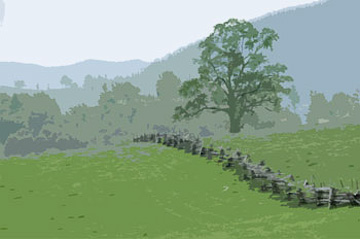 This one is a postarized rendition.
This one is a postarized rendition.
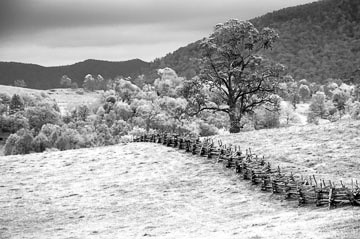 This one he calls “Snowy Field.”
This one he calls “Snowy Field.”
One of the places we visit in Maine is a lighthouse I have loved since I sailed these waters as a child on my dad’s wooden yawl. It is a great place for both our students and us, as it works in all weather, all times of day, all seasons. These photographs were all created the same late afternoon within 30 feet of each other.
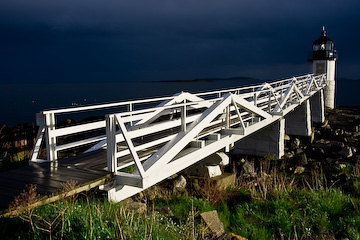 Brad O’Connell set the low light on the lighthouse against a dark, forbidding sky.
Brad O’Connell set the low light on the lighthouse against a dark, forbidding sky.
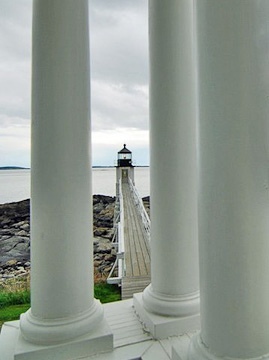 Harry Goodman snuck (yes, I know it’s not a real word, but it should be) a peak through the columns of the lightkeeper’s house.
Harry Goodman snuck (yes, I know it’s not a real word, but it should be) a peak through the columns of the lightkeeper’s house.
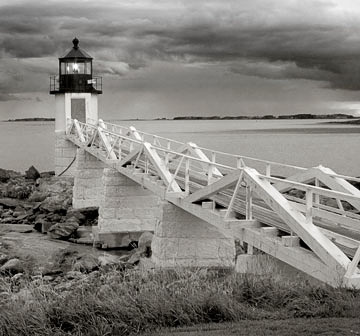 Sandy Wittman turned her shot into a black-and-white view.
Sandy Wittman turned her shot into a black-and-white view.
Out in the area around Moab, we saw two subjects, where through positioning or processing, the shot was given a different look.
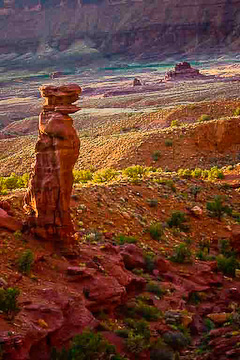 Chuck Lovers used a bold palette to bring out the various colors in the rocks.
Chuck Lovers used a bold palette to bring out the various colors in the rocks.
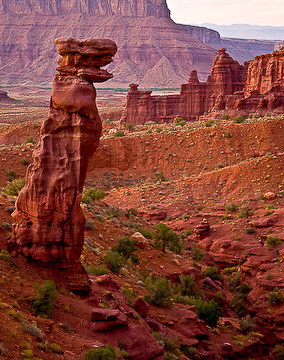 Dennis McCoy lowered his stance and set the rock off against the lighter background.
Dennis McCoy lowered his stance and set the rock off against the lighter background.
Several days later, we were in a location that does not offer a great choice in where one stands. Washer Woman is one of the subjects that people love to photograph.
 Joe Demello shot a vertical and turned it into a gentle but effective black and white.
Joe Demello shot a vertical and turned it into a gentle but effective black and white.
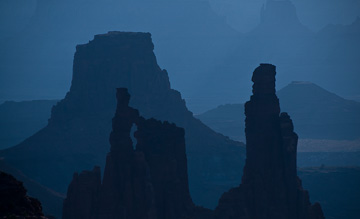 Bob Blum also turned his horizontal into a black and white, then gave it a neat blue cast.
Bob Blum also turned his horizontal into a black and white, then gave it a neat blue cast.
There’s a place in northern New England that we love to take people. This is another one of those places I have known since I was a small child. It is a difficult place to photograph because of the dappled light that can make everything so spotty.
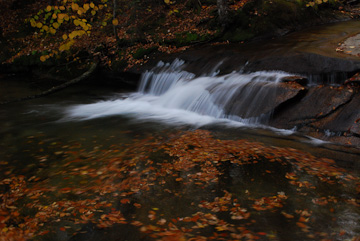 Jim Rowse set his waterfall in a surrounding of fall foliage.
Jim Rowse set his waterfall in a surrounding of fall foliage.
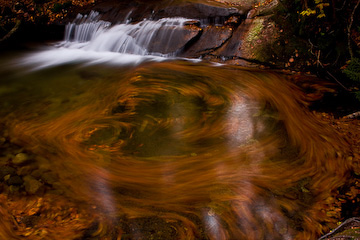 Maria Goble used the swirling pattern of the leaves in the water to set off the waterfall.
Maria Goble used the swirling pattern of the leaves in the water to set off the waterfall.
We often give assignments during our workshops. One on the Outer Banks was to photograph a red pump. Simple assignment, but we were pleased at the variety of angles and treatments. Here are three.
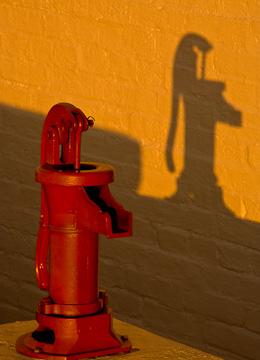 Alain Roy used the late afternoon light and shadow to set off his version of the pump.
Alain Roy used the late afternoon light and shadow to set off his version of the pump.
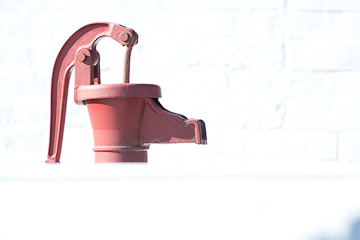 Jeff Chase gave it an almost human effect by having it peek up above a cistern.
Jeff Chase gave it an almost human effect by having it peek up above a cistern.
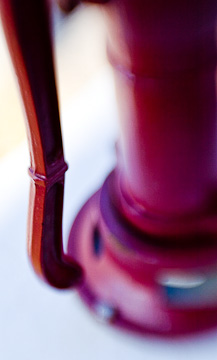 Jim Comer concentrated on the pump’s base and handle and did some fun post-processing.
Jim Comer concentrated on the pump’s base and handle and did some fun post-processing.
So, always seek your own vision. Try to make your shot different from any others you have seen. Sometimes the difference is subtle; sometimes it is dramatic. It doesn’t make any difference as long as the shot reflects your unique vision.
We Love Your Comments
It lets us know you are reading and enjoying our blog. It’s hard to write in a vacuum!
Meanwhile, check out our BCPA News page.
Hi Margo,
Thank you for noting in the alumni section of your newsletter my juried and solo shows. I appreciate the recognition. When you know the dates of the Charleston workshop in July and the Blue Ridge Parkway workshop in October let me know. I might be able to attend one or the other depending upon the dates.
Arnie